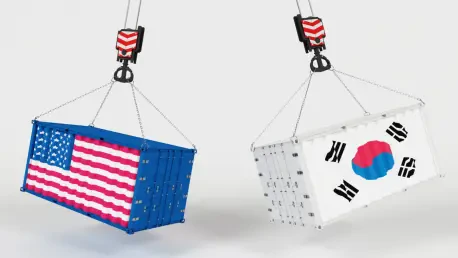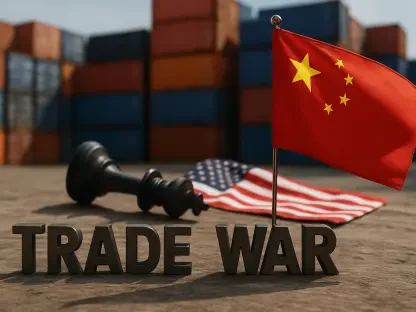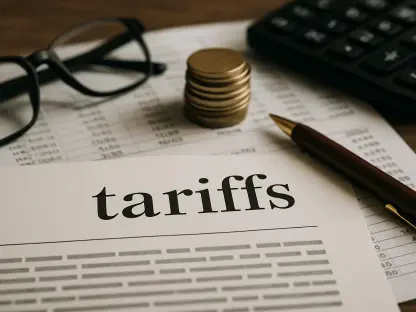In the realm of international trade, the recently finalized U.S.-Japan trade agreement represents a significant recalibration between two economic powerhouses that could profoundly impact global investors. Much more than a mere renegotiation of tariff structures, this agreement orchestrates strategic realignments for key sectors and underscores potential political-economic risks. By targeting major industries like automotive and agriculture, while strategically excluding technology sectors from reciprocal tariffs, the treaty crafts both opportunities and challenges for market players. Investors worldwide are attuned to these developments, eager to capitalize on emerging prospects while cautiously navigating the associated risks.
Strategic Realignments and Tariff Adjustments
Automotive and Agricultural Industry Impacts
The U.S.-Japan trade agreement reshapes competitive dynamics significantly through targeted tariff adjustments, especially within the automotive and agricultural industries. A notable reduction of U.S. tariffs on Japanese automobiles—from 25% to 15%—boosts Japanese automakers’ competitiveness, enhancing their foothold in the lucrative American market. However, this poses a challenge for U.S. manufacturers due to persistent high tariffs on essential materials like Japanese steel and aluminum. The effect is an uneven playing field, creating an intricate environment for stakeholders in the auto industry. On the agricultural front, the liberalization of Japan’s markets for commodities such as rice and beef marks a major shift. U.S. producers, who have long eyed these elusive markets, stand poised to benefit through increased exports. Nevertheless, the sensitivity of Japanese consumers to pricing poses inherent risks. Should U.S. agricultural products flood the market too aggressively, potential backlash from consumers could disrupt anticipated gains, demanding a tactful entry strategy.
Strategic Exclusions in Technology Sector Tariffs
The decision to exclude technology sectors from reciprocal tariffs between the U.S. and Japan underscores a strategic move with far-reaching implications. Semiconductors and related technologies benefit from this tactical exemption, aligning with broader U.S. reindustrialization objectives. These measures uniquely bolster Japan’s critical tech exports by maintaining competitive edges on the global stage. The 2025 Presidential Memorandum eliminating 24% tariffs on electronics—encompassing smartphones and storage devices—further underscores a pragmatic approach to safeguarding these crucial supply chains against global disruptions. For both nations, such strategic tariff exclusions offer a stabilizing factor amidst otherwise volatile economic landscapes. Investors are keenly aware that maintaining competitiveness in technology markets hinges significantly on these exclusions, which serve to prevent possible trade interruptions and foster innovation-focused bilateral cooperation.
Political Instability and Economic Risks
Japan’s Political Stability and Impact
The long-term efficacy of the U.S.-Japan trade agreement is inextricably linked to Japan’s political climate, with looming instability posing risks to its future sustainability. Prime Minister Shigeru Ishiba’s precarious standing creates uncertainty over whether current terms can be upheld amid potential shifts in leadership. Should political transitions occur, renegotiation of the trade treaty may prioritize domestic interests over bilateral cooperation, disrupting the current equilibrium. This vulnerability requires that investors remain vigilant, accommodating unpredictable political influences as they assess market opportunities. The economic ramifications are tied closely to Japan’s substantial $1.1 trillion holdings in U.S. Treasuries. This financial leverage carries implications amid escalating geopolitical tensions, particularly regarding fiscal policies. Investors must brace for potential disruptions stemming from volatile currency shifts and trade disputes that could alter the landscape of bilateral engagements.
Global Economic Risks and Currency Volatility
The economic relationship between the U.S. and Japan, framed by this agreement, introduces risks predicated on currency volatility and the geopolitical environment. Japan’s substantial U.S. Treasury holdings offer leverage options but simultaneously expose investors to risk amid fluctuating yen-dollar dynamics. In light of these uncertainties, investors are advised to consider currency hedging strategies, employing tools such as yen-dollar forwards or options to mitigate exposure. Furthermore, the agreement’s success story serves as a blueprint that may inspire similar deals between other major economies like the U.S., EU, or China, presenting fresh prospects yet carrying inherent uncertainties. These market explorations could open future investment avenues but necessitate a cautious approach given the unpredictable nature of international trade policies and political shifts.
Investment Opportunities and Strategic Recommendations
Potentials in Tech and Auto Sectors
Japanese technology firms and automakers are well positioned for outperformance in light of favorable tariff conditions and strategic currency policy exemptions. Investors can expect promising short-term returns by focusing on entities leveraging these advantageous terms. Strategic eyes should remain fixed on the inherent dynamics introduced by the U.S.-Japan trade policies, guiding investment decisions within these sectors. Moreover, with the technology sector gaining momentum through tariff exclusions, sustained cooperation between the two nations further enhances growth opportunities. For global investors keen on capitalizing on such emerging prospects, staying abreast of policy developments and market shifts is essential for realizing potential gains.
Prospects and Risks in Agriculture
U.S. agriculture stands to benefit from Japan’s market opening, with ETFs such as the iShares Japan Agrifood Index ETF (JPAG) showcasing promising opportunities. These prospects are shadowed by the risk of cultural pushback from Japanese consumers wary of foreign products. Thus, navigating agricultural investments requires sensitivity to market reception and pricing strategies. The dynamic interplay between opportunity and risk in these sectors mandates careful planning, emphasizing investor readiness to adapt to cultural and consumer trends. By leveraging insight into Japanese market inclinations, agricultural investment strategies can achieve favorable positions amid evolving trade landscapes.
Diversified Strategies for Navigating Trade Dynamics
In the sphere of international commerce, the newly concluded U.S.-Japan trade pact marks a pivotal adjustment between two major economic players, likely influencing global investors significantly. This agreement goes beyond mere alterations in tariff frameworks; it strategically reconfigures key sectors, highlighting potential political-economic risks on the horizon. Focusing on crucial industries like automotive and agriculture, while consciously omitting technology sectors from mutual tariffs, this treaty crafts a unique landscape filled with both opportunities and challenges for market participants. As nations maneuver in this new economic environment, investors around the world are keenly observing these changes, looking to tap into emerging opportunities while cautiously mitigating the inherent risks. The strategic nature of these sector selections could redefine trade dynamics, prompting investors to reassess their strategies and explore novel avenues for growth on this evolving global stage.









